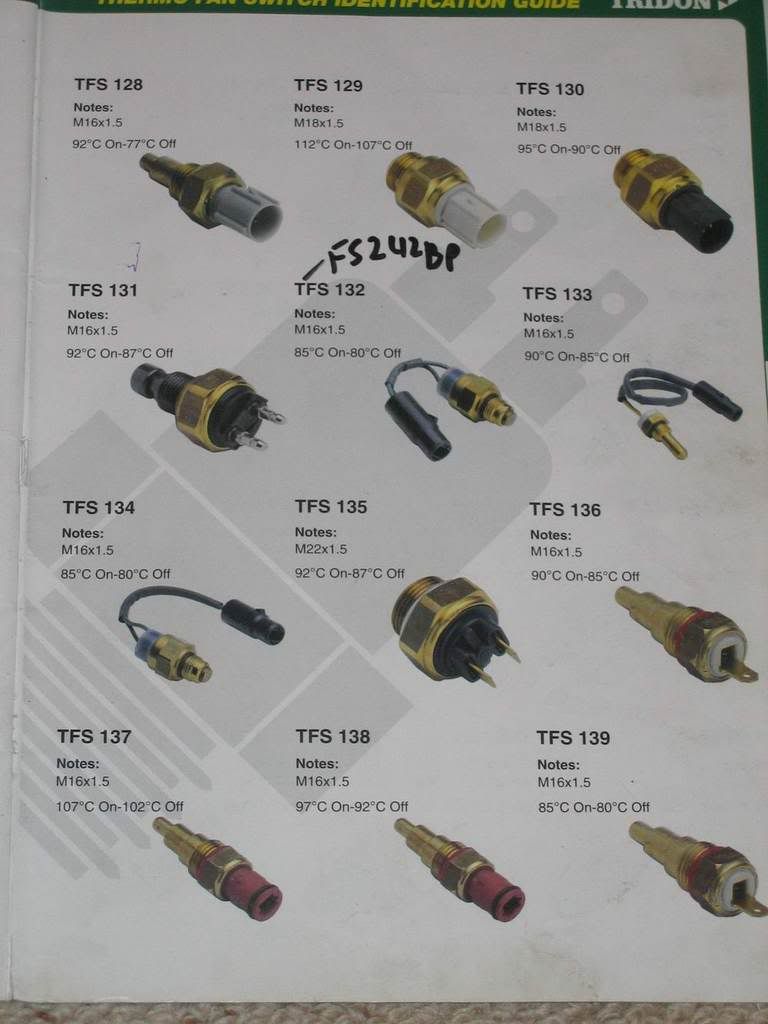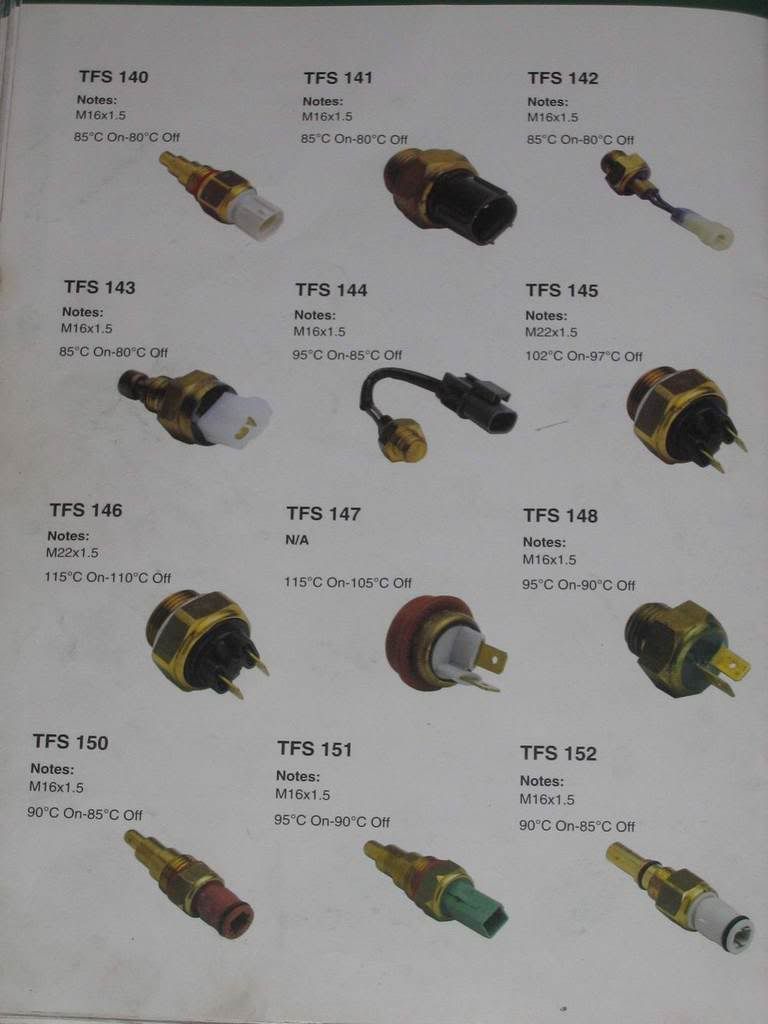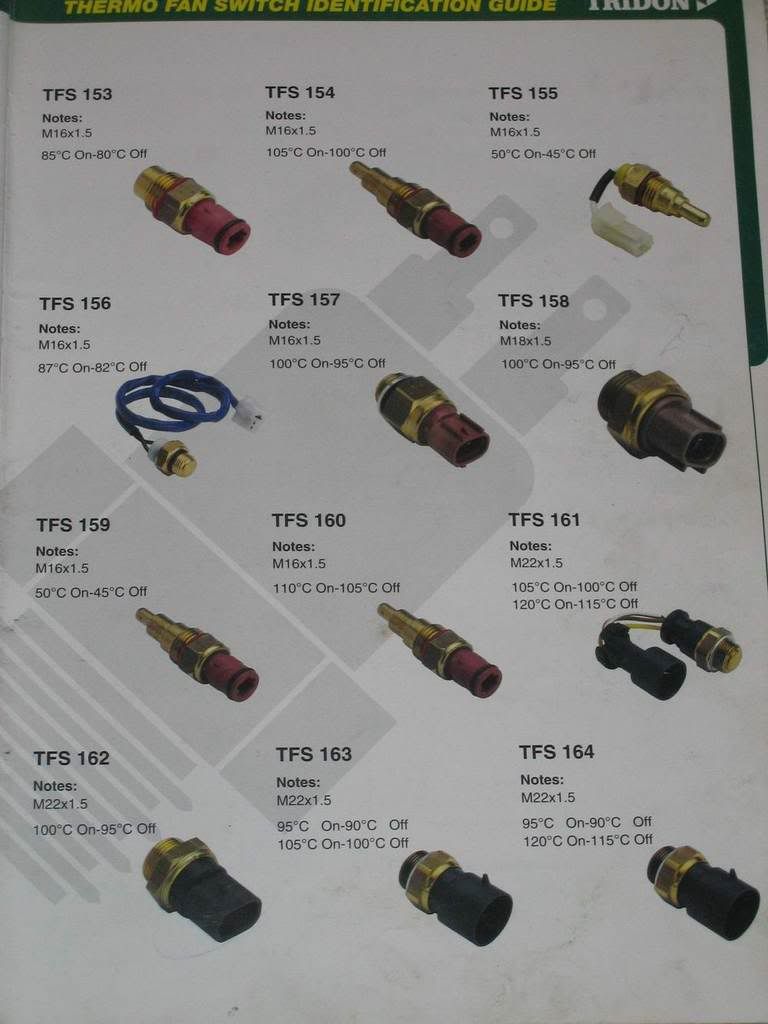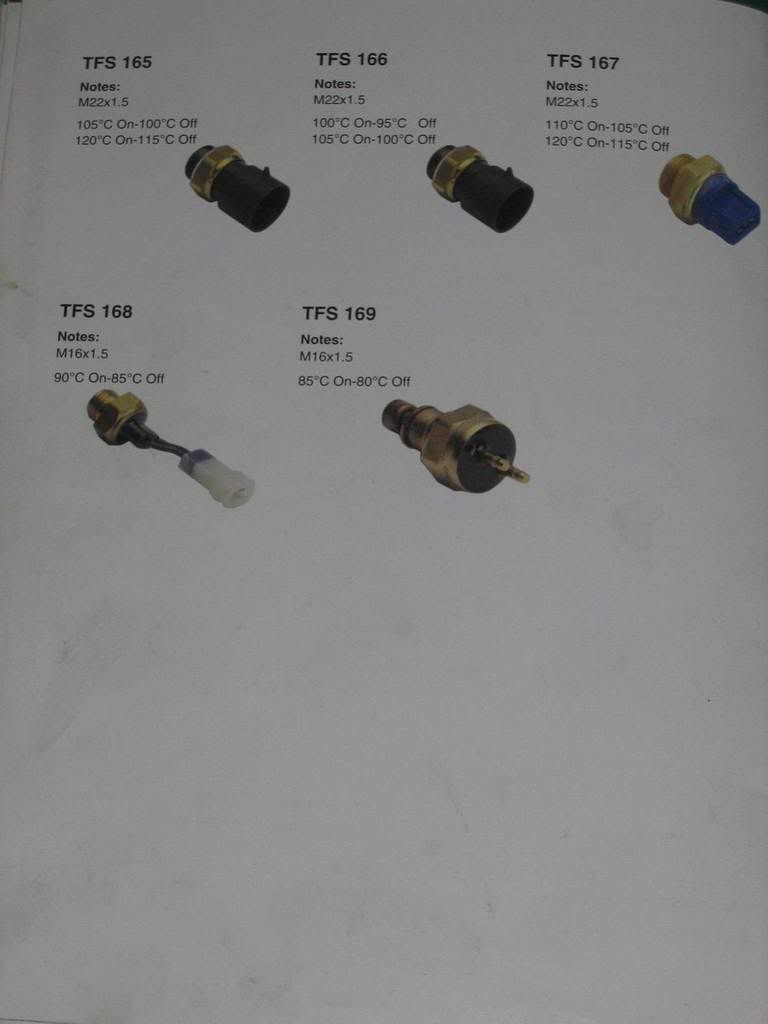





Pinched from another forum.
Moderator: -Scott-







For the record, I'm definitely not pushing these particular brands... just gathering together some rough data for people thinking of using electric fans.murcod wrote:I'd highly recommend checking out Spal fans over Davies Craig, they're a bit harder to find in Australia but there are some bargains on ebay.com
http://www.spal-usa.com/
chimpboy wrote:For the record, I'm definitely not pushing these particular brands... just gathering together some rough data for people thinking of using electric fans.murcod wrote:I'd highly recommend checking out Spal fans over Davies Craig, they're a bit harder to find in Australia but there are some bargains on ebay.com
http://www.spal-usa.com/
I have been thinking about this since you posted it... actually since before you posted it, mulling over the most logical relationship between the fan switch/temp sensor and the car's thermostat.murcod wrote:I'm also currently converting my Suzuki XL-7 using a similar circuit, but instead employing two Jaycar Universal Voltage Switch to do the temperature switching. That way I've got adjustable switching points (and hysteresis) plus I can use the factory ECU temp sensor to get the reading. I'm using a Spal dual 11" thermofan with built in shroud- but the circuit would work fine for any dual thermos.
Modern factory EFI systems use the same sensor to control the switching of stock electric thermos, and do so very accurately. So there's no reason why an aftermarket add on shouldn't work just as well.MightyMouse wrote:Tried the voltage sensitive switch system and found the following...
Little ecu coolant temp voltage variation at operating temp - The ECU coolant sensor is mostly used during warm up and is non linear. Had to completely remove the hysteriesis and disable the input divider
Variation in ECU reference voltage caused shifting of switching points with differences in electrical load.

-Scott- wrote:Isn't it a bit early in the day to be pissed?
Haha. I'm the complete opposite. On the Disco they're too skinny and stick out over the top of the radiatormurcod wrote:I looked at them, but they're very wide and not very tall- not really suited to a lot of 4WD's. They were something like 7cm too wide for the radiator core on my V6 2.7l GV XL-7!
They would have been hitting the chassis rails both ends.
-Scott- wrote:Isn't it a bit early in the day to be pissed?
I've had mine up and running for a week now. Given the "heat wave" in Adelaide over the past 7 days I've been highly impressed with how well the Spal dual 11" fans work.MightyMouse wrote:Tried the voltage sensitive switch system and found the following...
Little ecu coolant temp voltage variation at operating temp - The ECU coolant sensor is mostly used during warm up and is non linear. Had to completely remove the hysteriesis and disable the input divider
Variation in ECU reference voltage caused shifting of switching points with differences in electrical load.
Ended up going to a temperature controller ( jaycar again ) with a seperate sensor - now works fine.
Sooooo - check exactly how stable, what voltage and span is available from the ECU coolant sensor BEFORE you get too carrried away. Would work fine with some and be a PITA with others makes and models.
Electric on the front of the rad, and put the belt-driven one back on as well for max fan power I guess.suzisj40 wrote:i converted to a thermo fan from a belt driven fan because it was getting to hot 4wdriving at low revs and it is still getting hot so can any one recomend putting one on the front or go bac to belt.....
The Spal's are not much more expensive than the Davies Craig when the exchange rate is good.murcod wrote:I can recommend the Spal dual 11" fans- they're doing a fantastic job on my Suzuki XL-7 in 46 degree heat. They also make 12" duals as well, but once again they were too big for my core. http://www.spal-usa.com/fans/automated/" onclick="window.open(this.href);return false; ... 102130.pdf
The only issue will be the price, I bought mine from the USA when the exchange rate was 0.96.

That is pretty impressive making the rear-mounted radiator part of the rear door (tailgate)dank wrote:
-Scott- wrote:Isn't it a bit early in the day to be pissed?
As far as I know the EFI operating temp of the rover motors is around 87 degrees anyway (82 for a carby). My disco (97 3.9v8) regularly reaches 95 as I have the switch set to come on around this time and cool down to around 90 as if you go below the operating temp it can mess with your fuel consumption.Blythe wrote:Hi guys - this is my first post here.
I have just fitted an AU fan assembly to my 94 disco which has a 4.6 RR motor in it - gets up to running temp much faster, fine on the flat, fine on undulating hills and fine in the city but on long uphill runs it gets hotter than with the original. never got above 85 with the viscous fan (viscous frozen which is why I have replaced it) but going up the M1 out of Adelaide yesterday it hit 95c
I am using a TM2 to control it via an external relay. Love the TM2 very accurate, not sure about the AU fans though. I am going to fit fatter wire to it (6mm2) to make sure the juice is getting through ok as I fitted it with 3mm2 since that was all I had but I think I have an unacceptable voltage drop, which I haven't actually measured yet.
Blythe
-Scott- wrote:Isn't it a bit early in the day to be pissed?
Users browsing this forum: No registered users and 1 guest